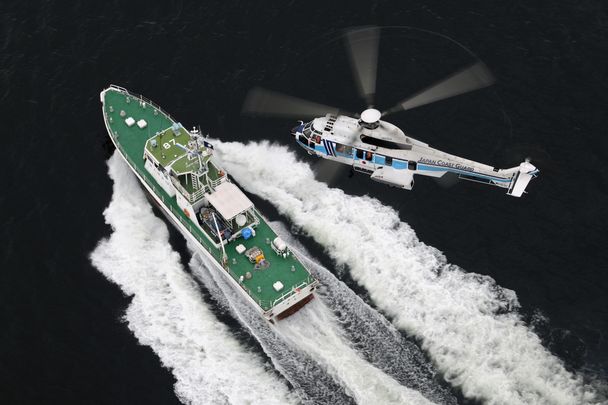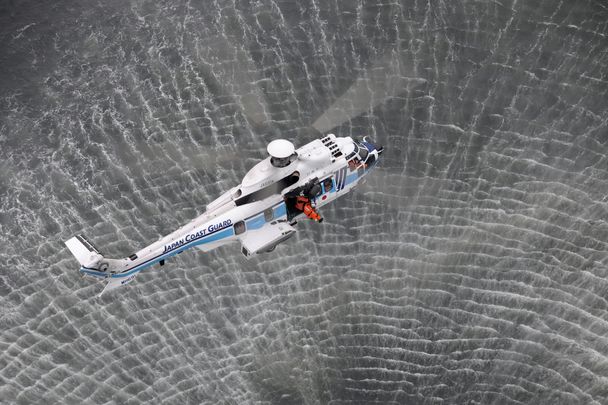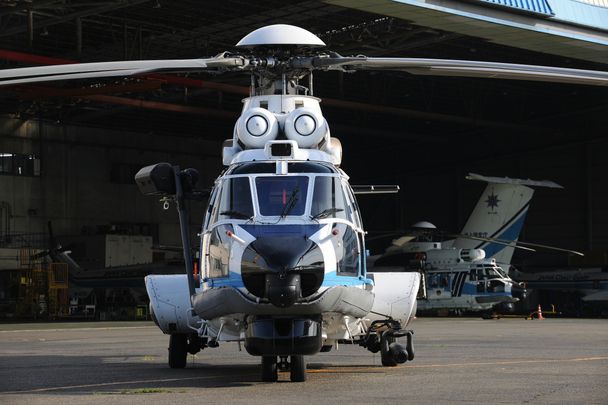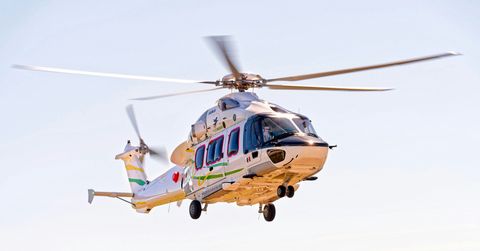A day at the beach… and an Airbus H225 rescue!

July in Japan saw a trip to the beach turn from delight to disaster for a woman who was swept out to sea, off the coast of Nojimazaki. Thankfully she was eventually spotted by a passing cargo ship and recovered after drifting approximately 80km. A Japan Coast Guard Airbus H225 played a key role in transporting the woman back to dry land. Its crew share their story.
The summer of 2024 saw what should have been a relaxing trip to the beach ended up in an ordeal for a woman in Japan, as she was swept away by currents, with her inflatable helping her stay afloat. Thankfully, luck was on her side. She was spotted by passing boats some 30 hours later and two sailors jumped into the water and brought her on board.
Also on her side was the Japan Coast Guard’s 3rd Headquarters, who upon receiving the initial report, sprang into action and immediately deployed patrol and surveillance boats and a special rescue team, supported by the JA690A helicopter (an Airbus H225) from Haneda Air Station.

The woman was hoisted from the boat to the helicopter and flown back to dry land to the relief of everyone involved – especially the Japan Coast Guard pilot who flew her back to the Yokohama Maritime Disaster Prevention Base: “When we found out that she was the one who had been missing since the night before the previous day. I first thought, ‘What? No way!’ But after I heard from the Special Rescue Team that her vital signs were stable, I felt relieved.”
This was a sentiment shared by the crew member operating the hoist “there are few cases of a person being rescued after being adrift for more than 30 hours,” he noted. “So, I was impressed by her strong will to survive, her vitality, and the many coincidences that contributed to the success of the rescue mission. Since I had also taken part in the search mission in Shimoda the previous day, it was very moving when I realised that this was the woman for whom we had been searching.”
In all, the whole operation took about two hours from the incident report from the ship to the time the woman was hoisted up and delivered to the hospital.

Performance when it matters most
The H225’s performance makes it an ideal helicopter for search and rescue (SAR) missions, especially at long range, as was the case in this instance. As the Japanese Coast Guard pilot testifies:
“It is very powerful, and has various functions of high-performance autopilot systems including the SAR mode, which result in reducing the pilot workload significantly – especially when flying missions at night or in bad weather conditions. The cabin is also very spacious, making it very easy to perform in-flight treatment on the rescued person”.
Indeed, the Super Puma family, as a whole, is extremely effective and reliable for disaster relief missions, with exceptional power and capacity, allowing them to transport supplies and essential personnel. Indeed, the pilot who helped rescue the swimmer also had experience of flying a Super Puma during another impressive rescue.
“I have also flown the H215 in the past. During the Great East Japan Earthquake, we rescued over 10 people by hoisting from a ship, and placed stretchers inside the aircraft to transport four sick people and the accompanying doctors and nurses to other hospital flying back and forth between Soma, Fukushima Prefecture and Niigata City without refuelling.”



